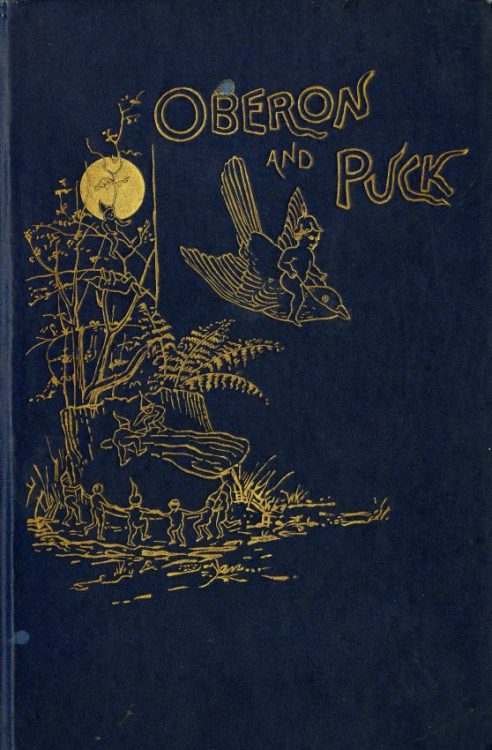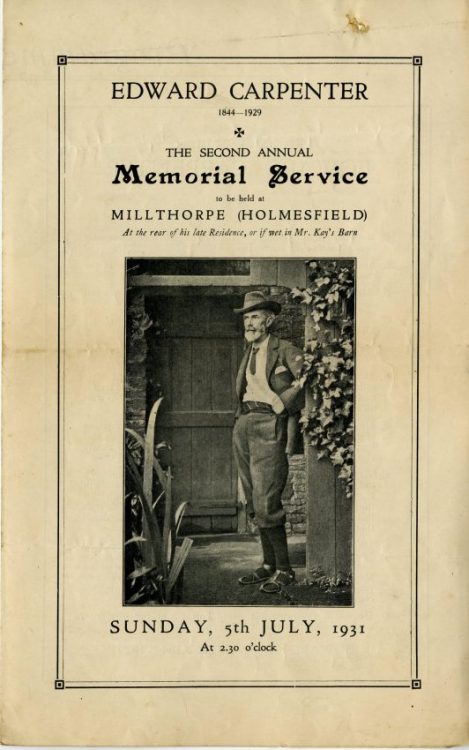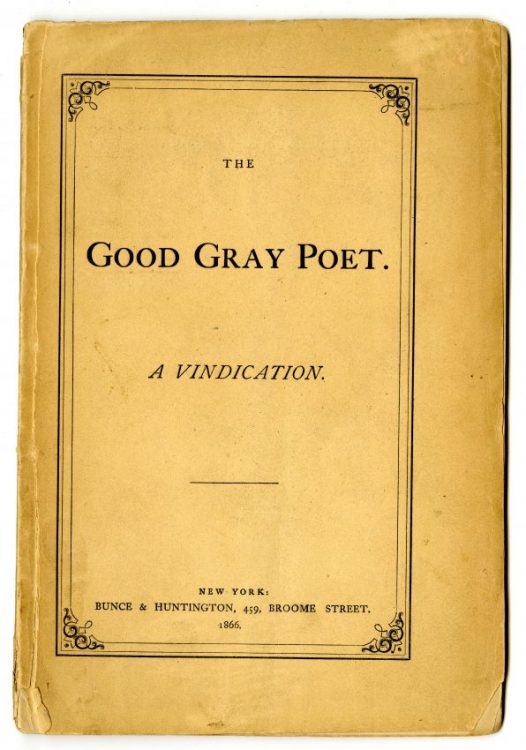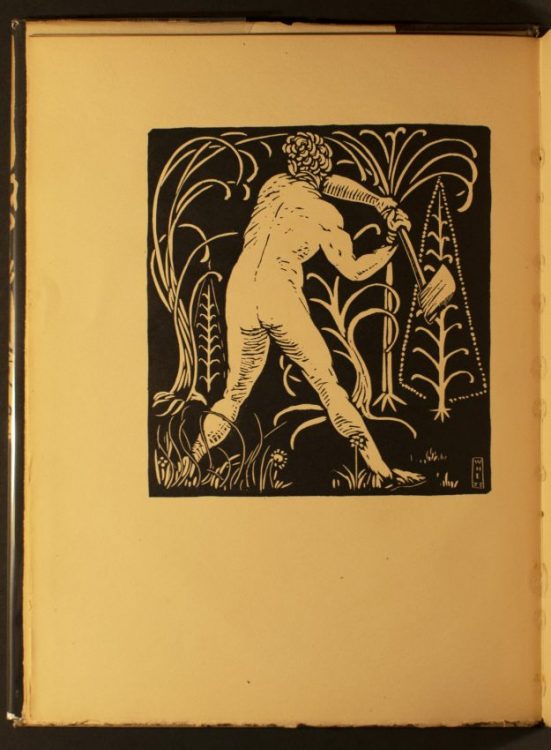Cone, Helen Gray, 1859-1934. Oberon and Puck: Verses Grave and Gay. New York: Cassell & Company, Limited, 1885.
Helen Gray Cone was an American poet and academic who had a long, successful career as a Professor of English at Hunter College in New York. Her poetry collection Oberon and Puck includes the skit “Narcissus in Camden,” first published in the Century Magazine, which humorously reimagines Oscar Wilde’s 1882 visit to Whitman in Camden in the form of a poetic dialogue.
Mark Samuels Lasner Collection.
A Problem in Modern Ethics: Being an Inquiry into the Phenomenon of Sexual Inversion, Addressed Especially to Medical Psychologists and Jurists. London: [Leonard Smithers], 1896.
Symonds, John Addington, 1840-1893. A Problem in Modern Ethics: Being an Inquiry into the Phenomenon of Sexual Inversion, Addressed Especially to Medical Psychologists and Jurists. London: [Leonard Smithers], 1896.
The English poet and literary critic John Addington Symonds was inspired by the poetry of Walt Whitman and corresponded with the American author. Symonds was a pioneer in the study of homosexuality, or sexual inversion as it was then known. In a letter he wrote in August of 1890, Symonds asked Whitman about the homosexual content of the "Calamus" poems. This prompted Whitman's reply in which he denied the "morbid inferences" and, as way of proof, claimed to have fathered six children, apparently unaware that Symonds himself was married and a father of four. This volume, quietly circulated by Oscar Wilde’s publisher (and dealer in erotica), Leonard Smithers, includes Symonds’s essay “Literature: Idealistic: Walt Whitman” which explores Whitman’s sexuality.
Mark Samuels Lasner Collection.
Towards Democracy. London: John Heywood, Deansgate, and Ridgefield; Manchester: John Heywood, 1883.
Carpenter, Edward, 1844-1929. Towards Democracy. London: John Heywood, Deansgate, and Ridgefield; Manchester: John Heywood, 1883.
The writing of Walt Whitman had a profound effect on the English author and socialist Edward Carpenter. Carpenter visited the poet in 1877 and again in 1884. In 1906 he published an account of his visits to America, Days with Walt Whitman. Carpenter’s long prose poem Towards Democracy is styled after Leaves of Grass. This copy of the first edition, published anonymously, bears Carpenter’s presentation inscription to his sister, Lizzie Daubeney.
Mark Samuels Lasner Collection.
Edward Carpenter (1844-1929) The Second Annual Memorial Service to Be Held at Millthorpe (Holmesfield), Sunday, 5th July, 1931.
Programme of Service for this memorial tribute to Edward Carpenter two years after his death.
Mark Samuels Lasner Collection.
Infelicia. Philadelphia: J. P. Lippincott, 1902.
Menken, Adah I., 1835-1868 Infelicia. Philadelphia: J. P. Lippincott, 1902.
One of the best-known actresses of her time, Adah Isaacs Menken was also an author who was influenced by Walt Whitman and wrote poetry in the same free verse style.
Reutlinger, Charles, 1816-1888. Photograph of Adah Isaacs Menken [1866].
In 1850 the German photographer Charles Reutlinger opened a studio in Paris, where he gained great popularity, especially for his portraits of actors, artists, musicians, composers, opera singers, and ballet dancers. Not surprisingly it was to Reutlinger that the American actress and author Adah Isaacs Menken went in 1866 to be photographed while starring as a semi-nude bareback horse rider in a hugely successful theatrical spectacle, Les pirates de la savanne.
O'Connor, William Douglas, 1832-1889. The Good Gray Poet: A Vindication. New York: Bunce & Huntington, 1866.
The daguerreotypist and author William Douglas O'Connor was a friend and supporter of Whitman who helped procure Whitman a position as a clerk in the Indian Affairs Bureau of the Department of Interior. When Secretary of the Interior James Harlan fired Whitman due to the moral character of Leaves of Grass, O'Connor published The Good Gray Poet: A Vindication (1866), a 46-page pamphlet that criticized Harlan and other Whitman critics while lauding and joining those who admired Whitman's poetry. The label "Good Gray Poet" was to stick, gaining Whitman many readers.
Whitman, Walt, and Wharton H. Esherick. Song of the Broad-Axe. Philadelphia: Centaur Press, 1924.
The Philadelphia artist Wharton Esherick is most widely known for his sculptures and non-traditional furniture designs. Esherick was also an accomplished illustrator and his woodcuts accompany Whitman's poem "Song of the Broad-Axe" in this fine-press publication which was the first book published by the Centaur Press.



![Photograph of Adah Isaacs Menken [1866]. Photograph of Adah Isaacs Menken [1866].](https://exhibitions.lib.udel.edu/whitman/wp-content/uploads/sites/39/2019/10/Photograph-of-Adah-Isaacs-Menken-1866.-e1579105891621.jpg)


